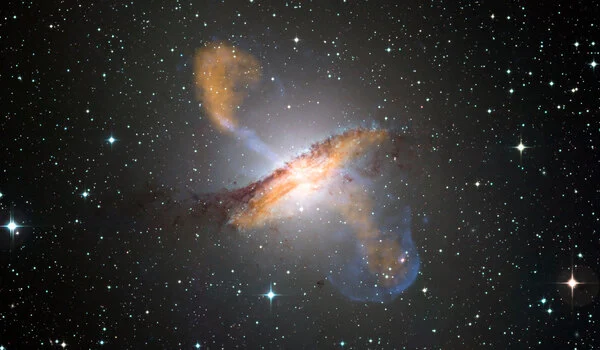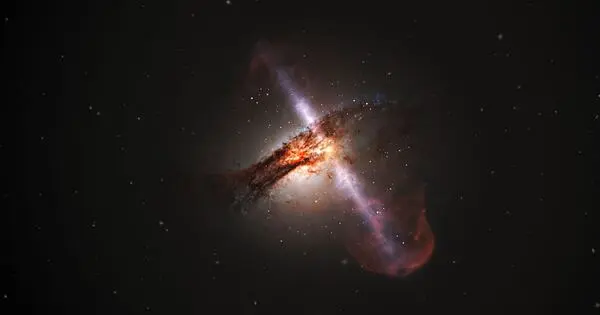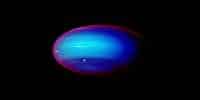Chaos reigned just milliseconds after the Big Bang. Atomic nuclei fused and disintegrated in rapid succession. Extremely high pressure waves built up and squeezed matter so tightly that black holes formed, which astrophysicists refer to as primordial black holes. Did primordial black holes aid or hinder the birth of the universe’s first stars, which occurred about 100 million years later?
Simulations on the Stampede2 supercomputer of the Texas Advanced Computing Center (TACC), part of The University of Texas at Austin, aided in the investigation of this cosmic question.
“We discovered that primordial black holes do not significantly alter the standard picture of first-star formation,” said Boyuan Liu, a postdoctoral researcher at the University of Cambridge. Liu is the lead author of computational astrophysics research that will be published in the Monthly Notices of the Royal Astronomical Society in August 2022.
The standard model of astrophysics holds that in the early universe, black holes seeded the formation of halo-like structures through their gravitational pull, similar to how clouds form by being seeded by dust particles. This is good news for star formation, as these structures acted as scaffolding, allowing matter to coalesce into the first stars and galaxies.
A black hole, on the other hand, heats up as gas or debris falls into it. This creates a hot accretion disk around the black hole, which emits energetic photons that ionize and heat the surrounding gas. This is a disadvantage for star formation because gas must cool before it can condense to a high enough density to trigger a nuclear reaction, igniting the star.
We discovered that these two effects, black hole heating and seeding, almost cancel each other out, and the overall impact on star formation is small. Primordial black holes can accelerate, delay, or prevent star formation depending on which effect wins. This is why primordial black holes can be important.
Boyuan Liu
“We discovered that these two effects — black hole heating and seeding — almost cancel each other out, and the overall impact on star formation is small,” Liu said. Primordial black holes can accelerate, delay, or prevent star formation depending on which effect wins. “This is why primordial black holes can be important,” he added.
Liu emphasized that only cutting-edge cosmological simulations can reveal the interplay of the two effects. Concerning the significance of primordial black holes, the study also suggested that they interact with the first stars and generate gravitational waves. “They may also be capable of causing the formation of supermassive black holes. These aspects will be investigated in subsequent studies “Liu added.
Liu and colleagues used cosmological hydrodynamic zoom-in simulations as their tool for state-of-the-art numerical schemes of gravity hydrodynamics, chemistry, and cooling in structure formation and early star formation for the study.
“A key effect of primordial black holes is that they are seeds of structures,” Liu said. His team built the model that implemented this process, as well as incorporating the heating from primordial black holes.

They then added a sub-grid model for black hole accretion and feedback. The model calculates at each timestep how a black hole accretes gas and also how it heats its surroundings. “This is based on the environment around the black hole known in the simulations on the fly,” Liu said. XSEDE awarded the science team allocations on the Stampede2 system of TACC.
“Supercomputing resources in computational astrophysics are absolutely vital,” said study co-author Volker Bromm, professor and chair, Department of Astronomy, UT Austin. Bromm explained that in theoretical astrophysics, the ruling paradigm for understanding the formation and evolution of cosmic structure is to use ab initio simulations, which follow the ‘playbook’ of the universe itself — the governing equations of physics.
The simulations use data from the universe’s initial conditions to high precision based on observations of the cosmic microwave background. Simulation boxes are then set up that follow the cosmic evolution timestep by timestep. But the challenges in computational simulation of structure formation lie in the way large scales of the universe — millions to billions of light years and billions of years — mesh with the atomic scales where stellar chemistry happens.
“The microcosm and the macrocosm interact,” Bromm said. “TACC and XSEDE resources have been absolutely vital for us to push the frontier of computation astrophysics. Everyone who is at
Faculty, postdocs, and students at UT Austin benefit from the fact that we have such a premier supercomputing center. “I’m grateful,” Bromm added. “If we take a look at one typical structure that can form the first stars, we need around one million elements to fully resolve this halo or structure,” Liu explained. “This is why TACC requires supercomputers.”
According to Liu, using Stampede2, a simulation running on 100 cores can be completed in a matter of hours as opposed to years on a laptop, not to mention the bottlenecks with memory and reading or writing data. “The overall goal of our research is to understand how the universe evolved from the simple initial conditions of the Big Bang,” Bromm explained.
The structures that emerged from the Big Bang were driven by the dynamical importance of dark matter. The nature of dark matter remains one of the biggest mysteries in science. The clues of this hypothetical yet unobservable substance are undeniable, seen in the impossible rotational speeds of galaxies. The mass of all the stars and planets in galaxies like our Milky Way do not have enough gravity to keep them from flying apart. The ‘x-factor’ is called dark matter, yet laboratories have not yet directly detected it.
Gravitational waves, on the other hand, have been detected, first by LIGO in 2015. “Primary black holes may be able to explain these gravitational wave events that we have detected over the last seven years,” Liu said. “This only serves to motivate us.”
Bromm stated: “Supercomputers are providing unprecedented new insights into the workings of the universe. The universe presents us with extreme environments that are extremely difficult to comprehend. This also provides motivation to develop ever-more powerful computation architectures and algorithmic structures. There is great beauty and power to everyone’s benefit.”















